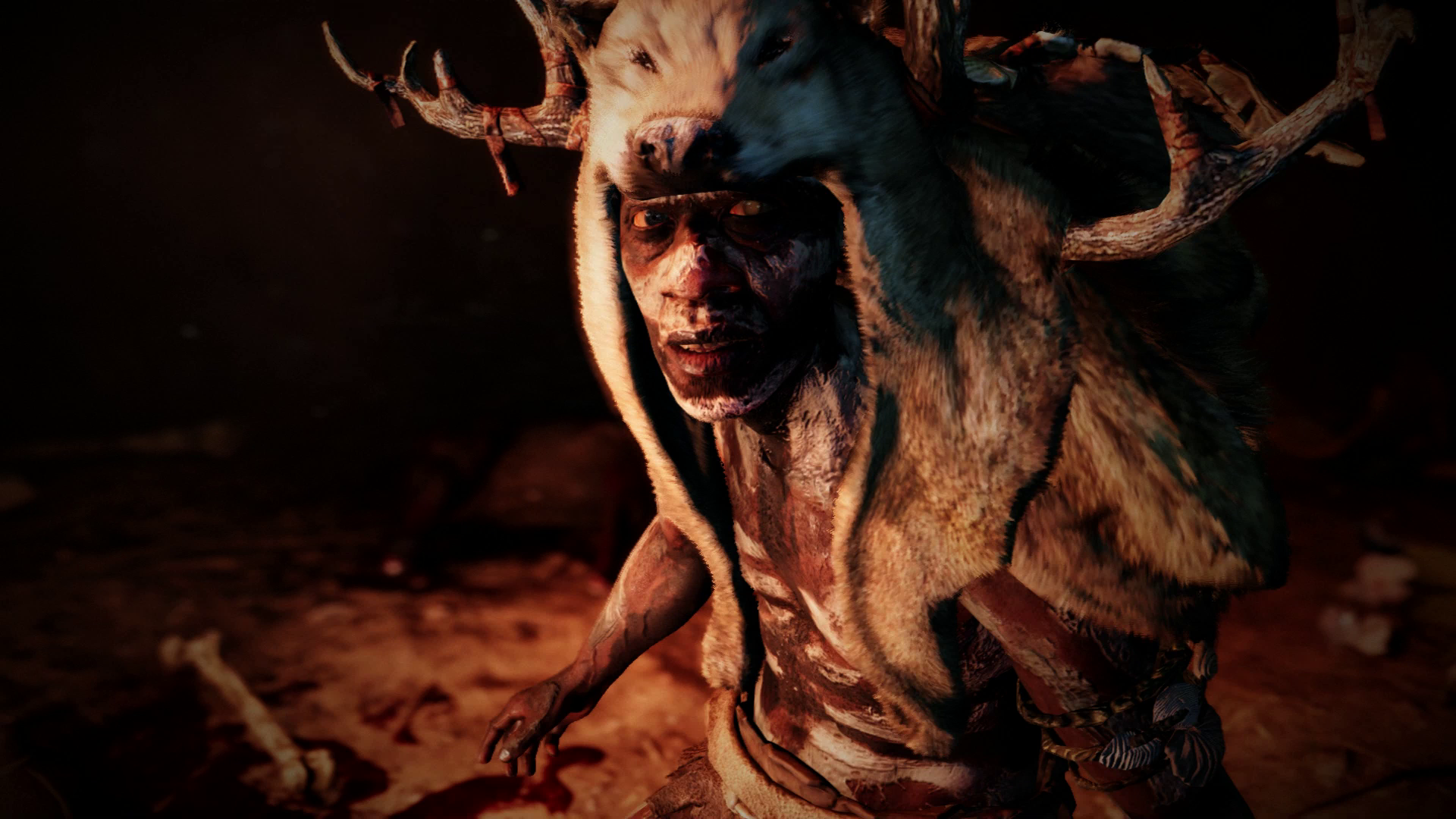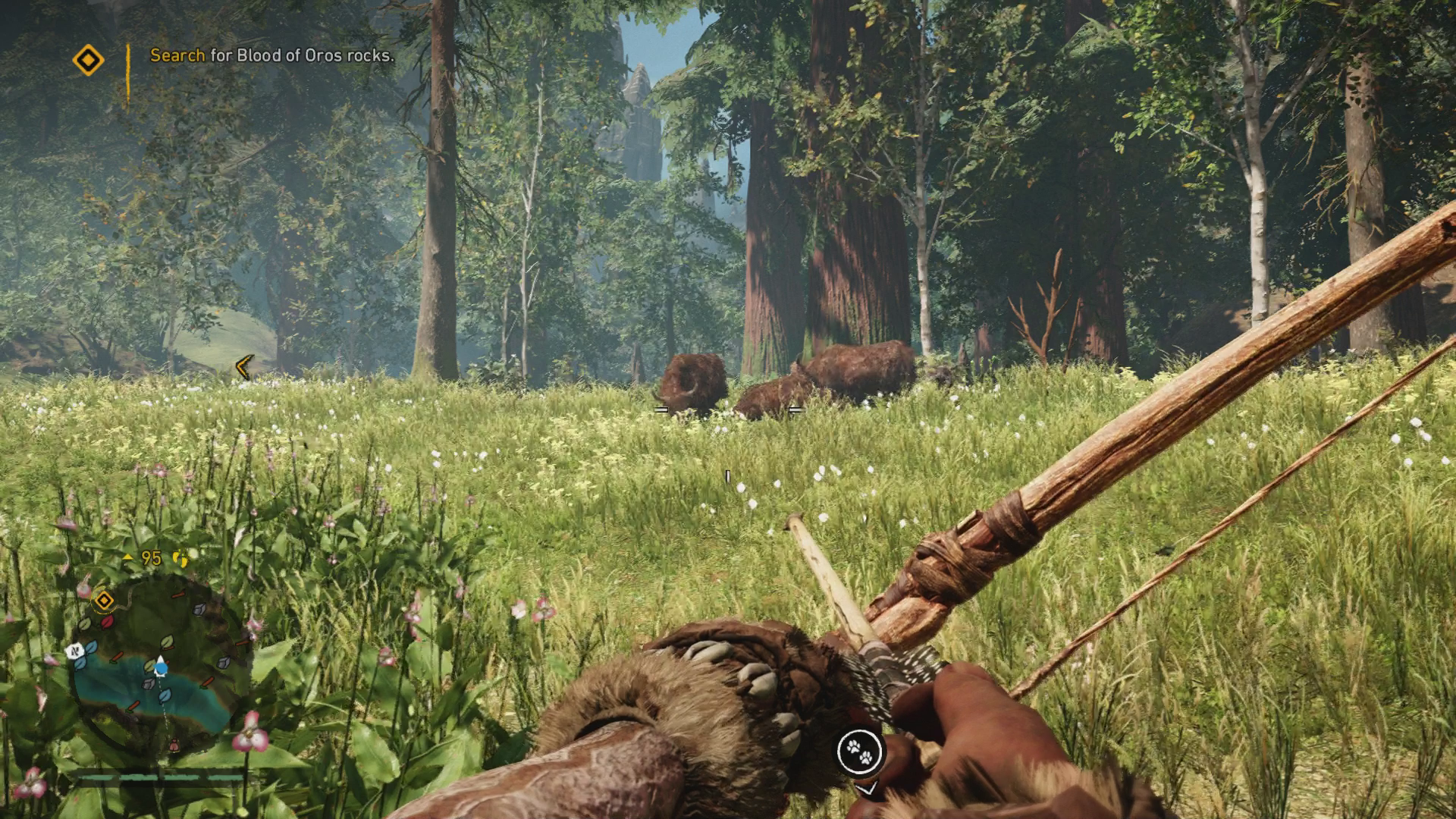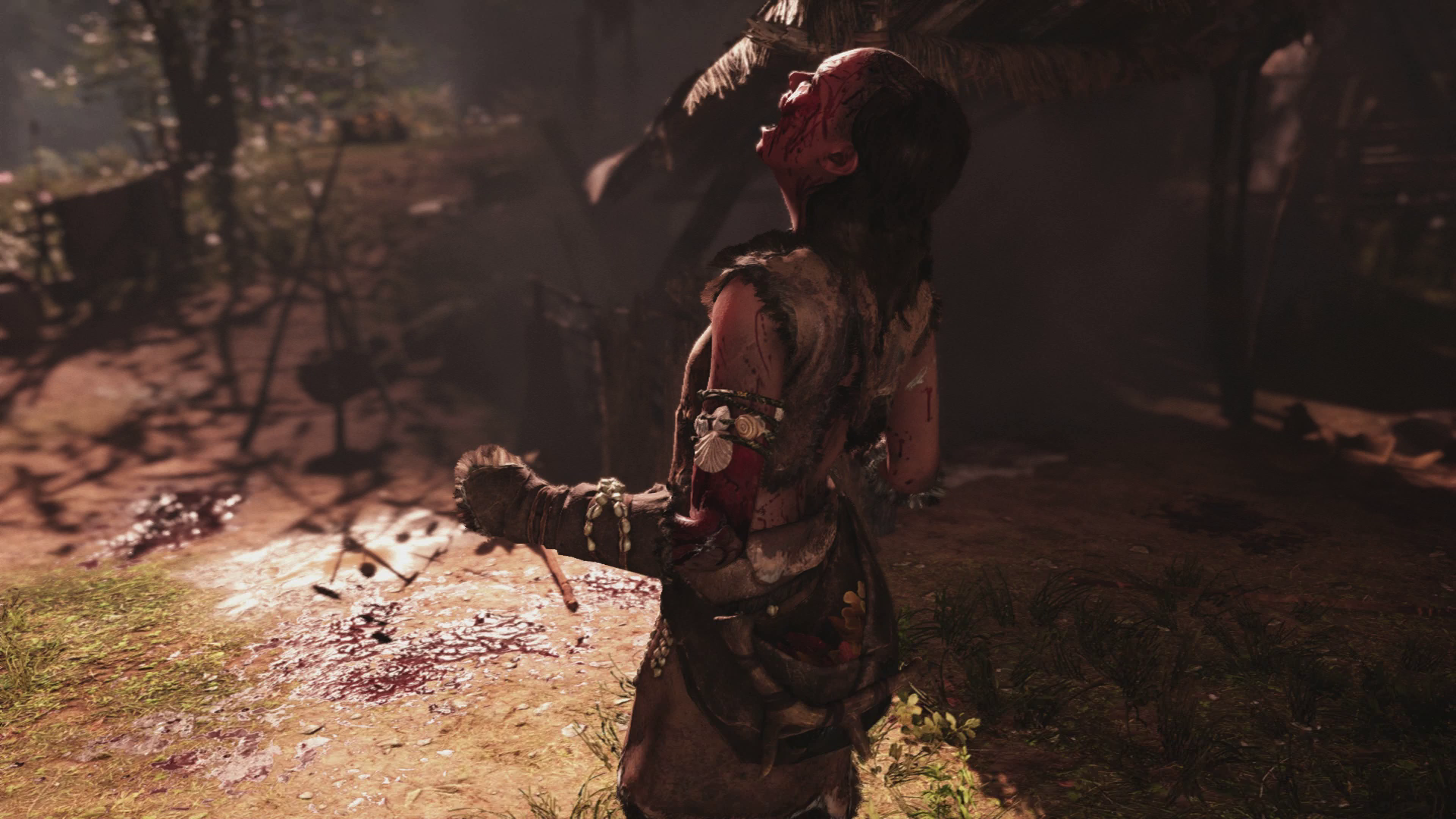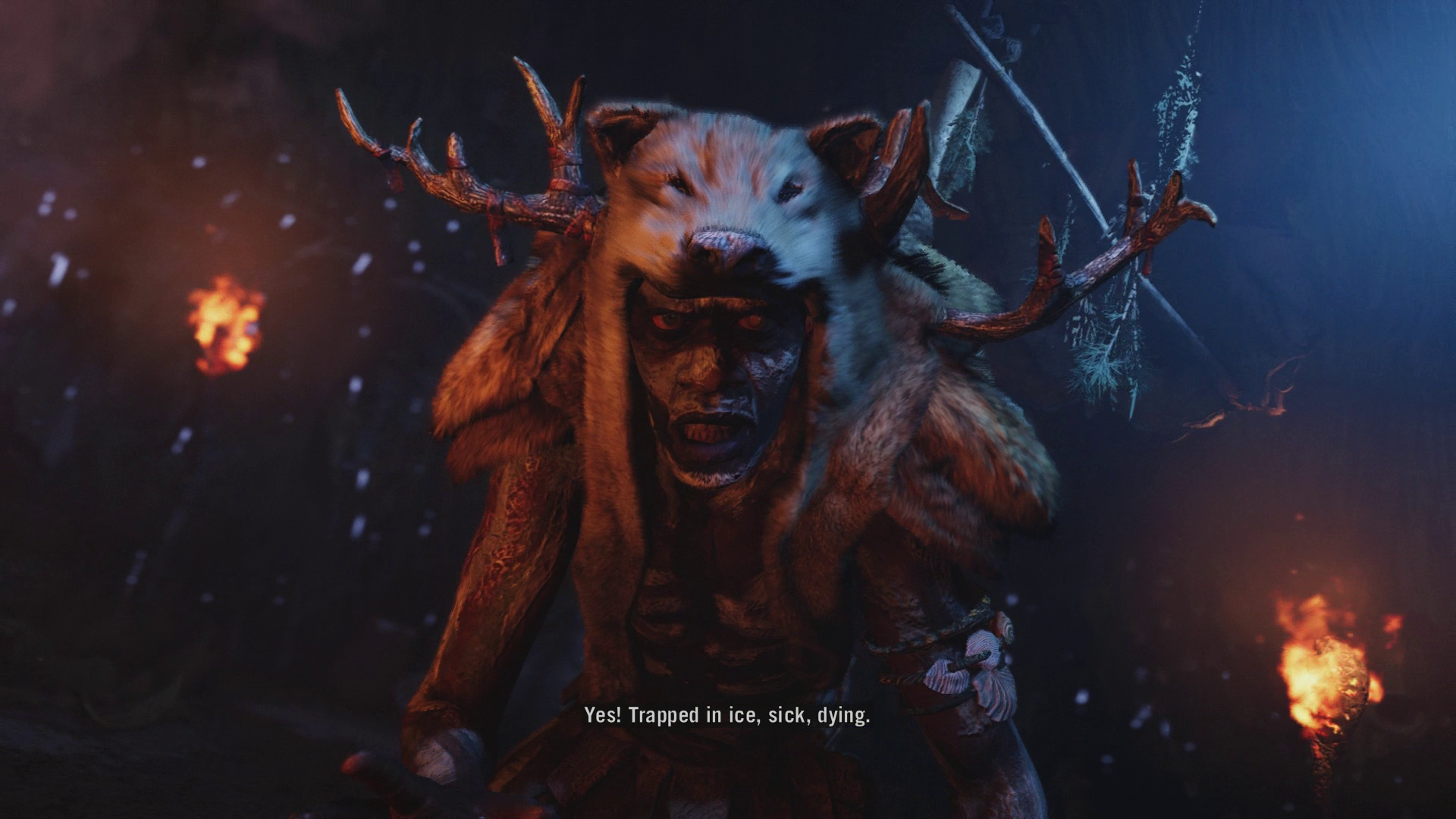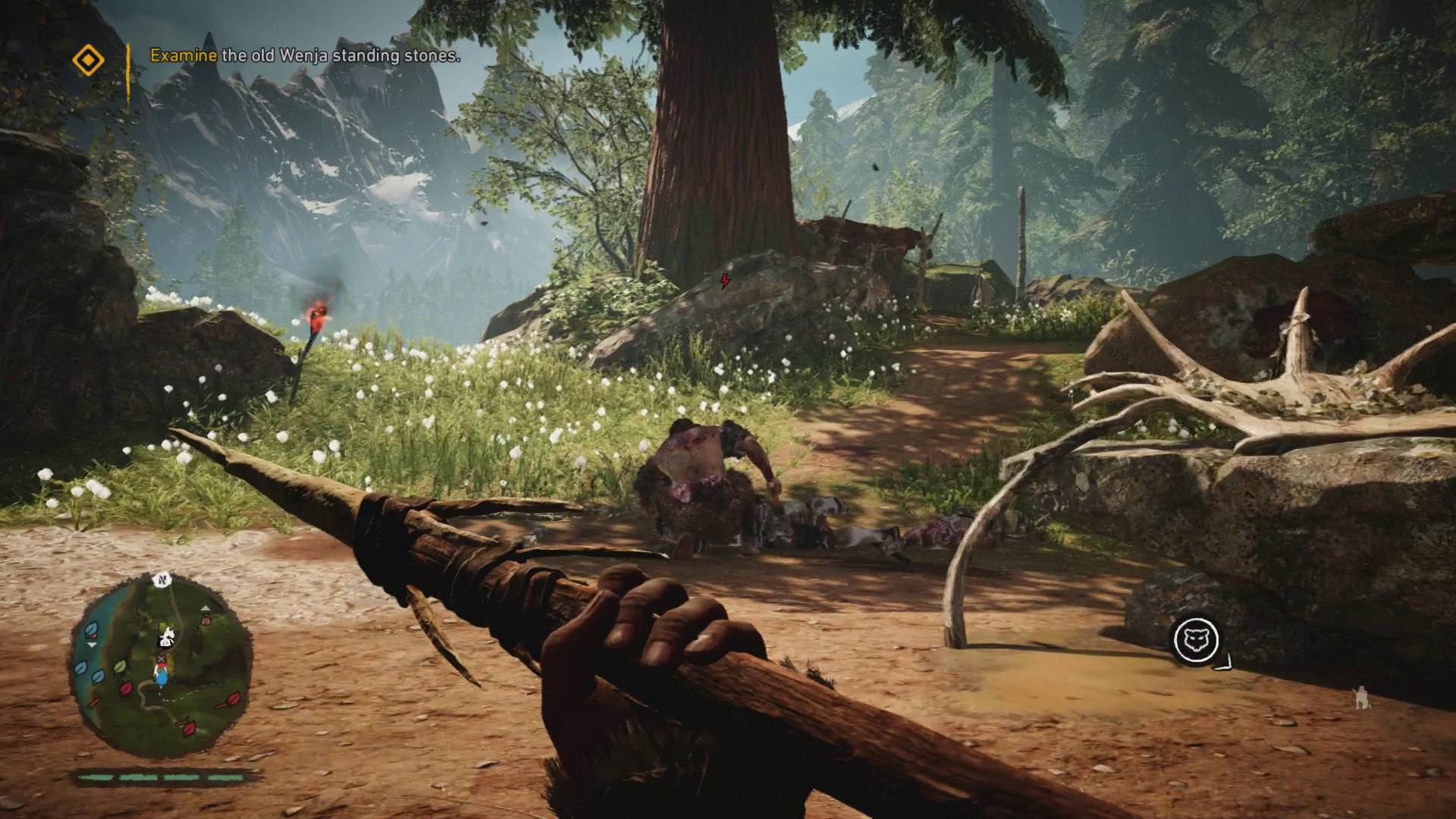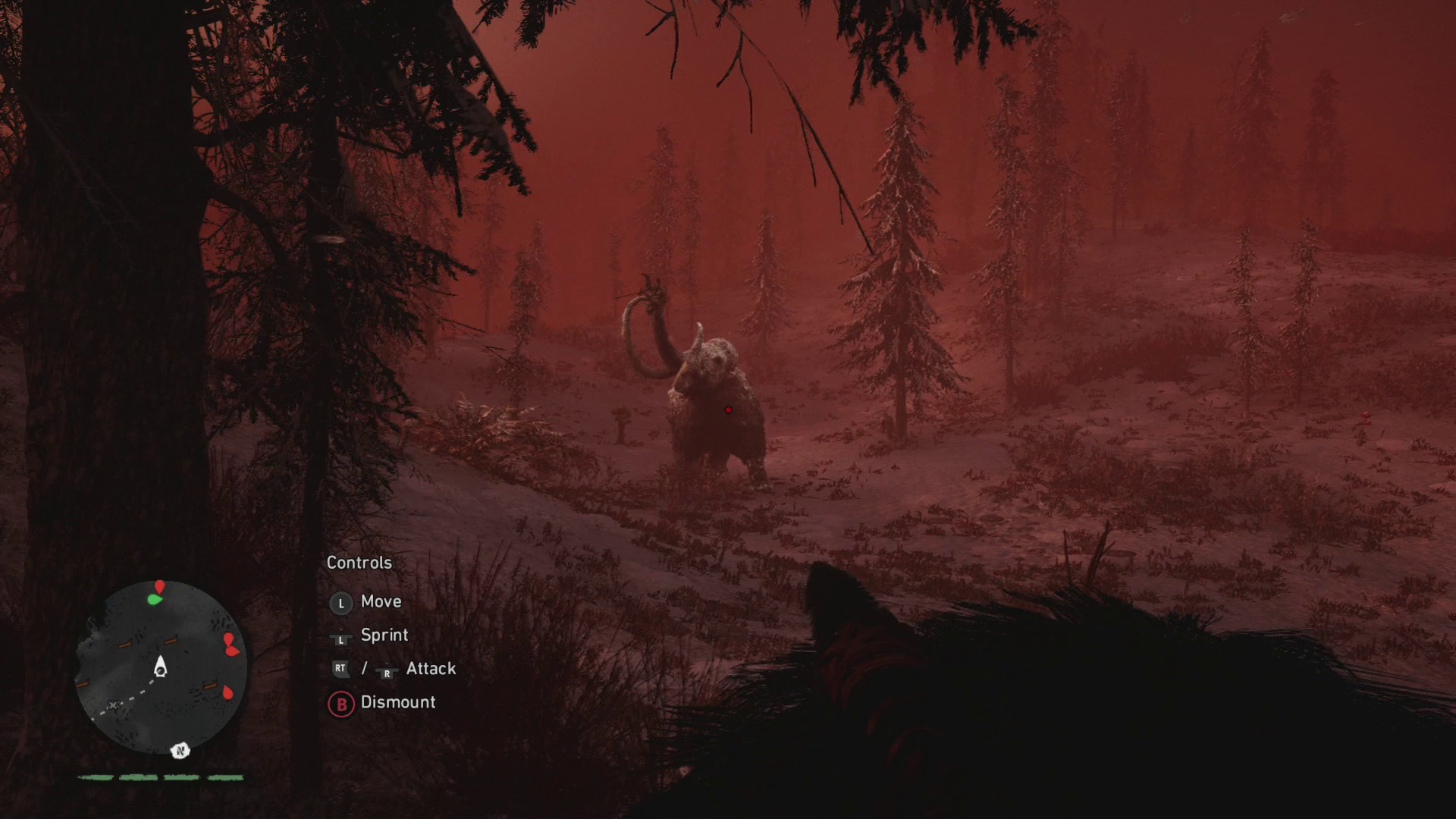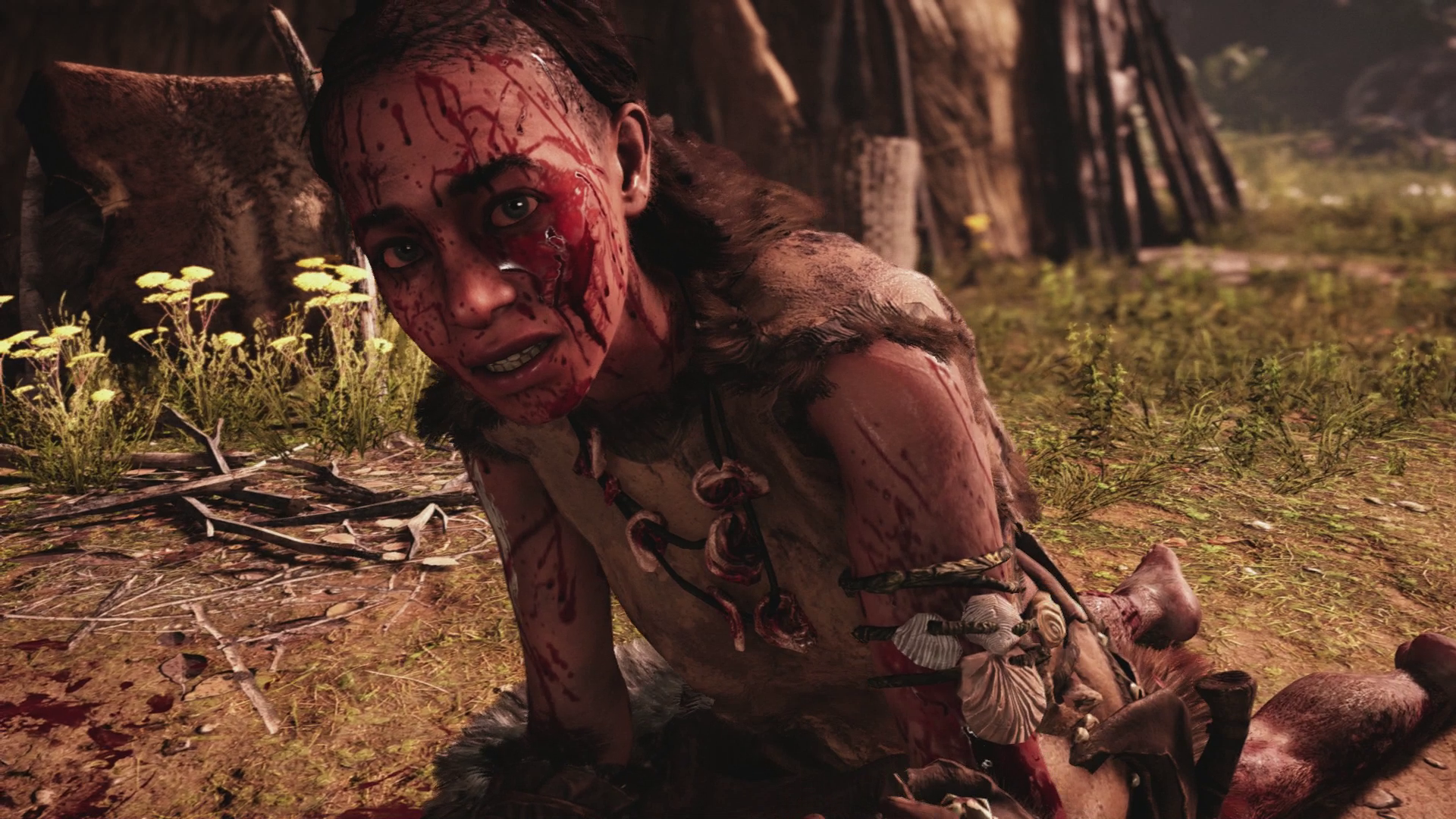

Far Cry Primal has arrived, taking the open world adventure franchise back to the Stone Age. As Ubisoft moves away from its forced annualization of Assassin's Creed, I had to wonder whether they were gunning for Far Cry to replace it as a means of guaranteed, near-yearly income. Far Cry 4 launched just 15 months ago, and while polished and broad in scope, it felt uninspired. It was a solid, but safe product, and in my opinion, nowhere near as memorable as Far Cry 3.
I admit, I went into Far Cry Primal with an edge of cynicism, expecting a formulaic first-person jaunt into yet another Ubisoft-branded open world, fresh off the factory line. Very early on, Far Cry Primal pummelled my measured expectations into dust.
Primal effectively resets the franchise, without losing what made Far Cry a big name in the first place. Perhaps most importantly, Primal joins The Division, For Honor and Rainbow Six Siege in marking a renewed desire for innovation at the publishing behemoth, which, for a while appeared to edge far too close to becoming dull, something a video game studio should never want to be.
Disclosure: This review was conducted on Xbox One using a code provided by Ubisoft.
Roots, Bloody Roots
Setting & Design
As its name suggests, Far Cry Primal takes the first-person franchise back to a prehistoric era, and back to the series' roots in the process. AK-47s are replaced with bone clubs, and fire is the latest technological innovation. As a series, Far Cry is typified by its exotic locations and lone-wolf hero stories, and Primal takes the fantasy to new extremes.
In Far Cry Primal, you play as Takkar, a young Wenja warrior who has travelled long and hard to reach the verdant land of Oros. After losing most of his tribesmen to the perilous journey, Takkar arrives to discover that his Oros kin has been nearly wiped out by savage rivals and roaming predators. With the survivors scattered, Takkar resolves to rebuild his community, take revenge on the violent Udam and Izila tribes and ultimately conquer the untamed land of Oros.
All the latest news, reviews, and guides for Windows and Xbox diehards.
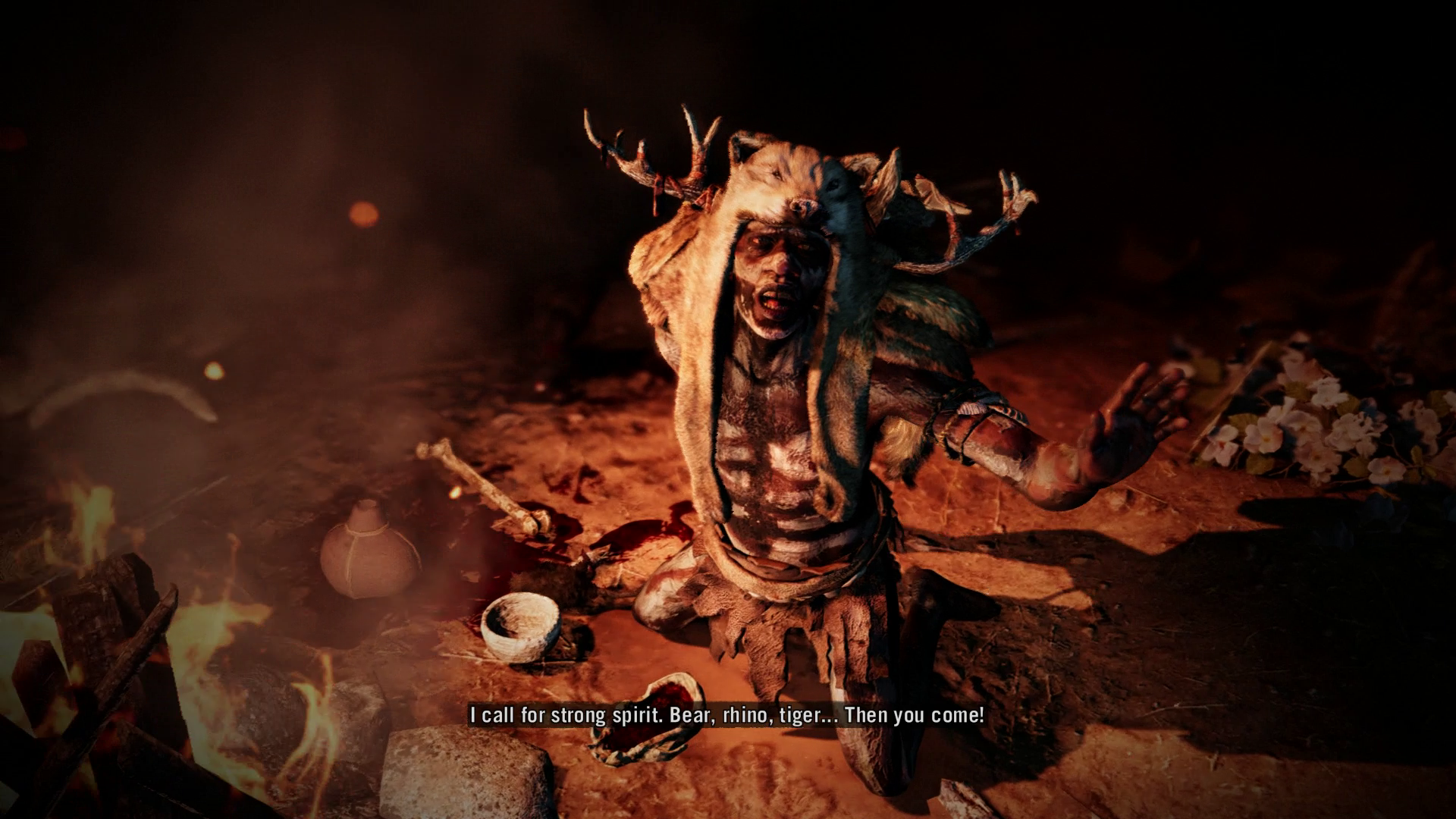
Oros is inspired by a Mesolithic era Eastern Europe, some 12,000 years ago. Ubisoft says that Primal represents a time that tribes from all corners of Europe migrated on a hunt for resources, and conflict was inevitable.
Ubisoft is well known for their painstakingly detailed and authentic open worlds, and Far Cry Primal passionately maintains that ideology with some fabulous design and tech. To accentuate the fact the Oros valley is untouched by man, Ubisoft goes to extra lengths to populate the game's locations with dense swathes of natural features. Beyond dynamic day and night cycles, incredible lighting tech and weather systems, Far Cry Primal pushes foliage density, draw distance and its A.I. animal ecosystems to another level.
When the vast majority of a game's visuals look pristine, minor issues do stand out like a sore thumb. Primal's waterfalls look as though they came from the PlayStation 2 era, and I've seen plenty of instances where plants float above the ground, unattached to anything. Very occasionally, some of Primal's locations can kill the Xbox One version's frame rate as well, dropping well below its baseline 30 FPS.
Minor issues aside, Far Cry Primal joins the likes of The Witcher 3 in showcasing some of the most atmospheric and immersive natural reconstructions we've seen in a video game, and if you have a capable Windows PC, the scenery will be even more beautiful.
Beyond visuals, Ubisoft has paid a startling amount of attention to Far Cry Primal's sound treatment. As you move through the Oros wilds, animal calls ring out like a chorus, backed by roaring winds and creaking trees. The more you play, the more you'll come to recognise those animal calls, and importantly, whether or not they're a potential threat. Ubisoft enlisted the help of professional linguists to reconstruct the Proto-Indo-European language for the game's various human tribes, and it adds an edge of authenticity that few publishers are willing (or able) to pursue.
The playable land of Oros is impressively vast, with a great variety of environments. From the valley's verdant river forests to the harsh boreal mountains, Far Cry Primal ambitiously explores the borders of what's visually possible on Xbox One. Does it have the story and gameplay to match?
Back To The Primitive
Story & Gameplay
As noted, Far Cry Primal represents a back-to-basics approach for the franchise. Primal has no multiplayer features and streamlines some of Far Cry 3 and 4's most repetitive elements while introducing an array of fresh mechanics.
Before we sink our teeth into Far Cry Primal's gameplay, know that its story delivery has undergone some subtle changes from its predecessor that not only elevate the experience, but also interweave it a little more closely with core gameplay features.
On Takkar's quest to create a haven for his tribe, you'll come face to face with the cannibalistic Udam and the technologically superior Izila tribe. Both tribes don't particularly fancy sharing the bountiful Oros valley with the Wenja (or each other), and it's up to Takkar to lead his people, expand the Wenja's influence and ultimately ensure that it's your tribe that avoids extinction.
Considering that the game's story is delivered entirely with subtitles, the fact you're able to connect with and feel the struggle of the game's virtual cast portrays Ubisoft's narration at its best. The facial motion capture is incredibly emotive, and despite the game's primordial setting, Ubisoft manages to inject a lot of diversity into the Primal's characters and plot. You'll partake in spiritual journeys with a blood-curdling shaman, take counsel from an elder huntress and earn the respect of your fellow warriors, as you dive into various non-linear story quest chains, side missions, and optional objectives.
Considering that the game's story is quite boldly delivered entirely with subtitles, the fact you're able to connect with and feel the struggle of the game's virtual cast shows Ubisoft at its best.
The game revolves around the growth of the Wenja tribe, and what ancient civilization would be complete without a bona fide settlement? As you complete missions, gather resources and free captive Wenja, your tribe will grow. Your settlement will expand too, giving you perks and passive bonuses. It's not Fallout 4's dynamic base construction system, but it provides Takkar's story progress some pleasing visual representation. As you progress, the Wenja tribe begin to craft musical instruments, partake in rituals, and experiment with other primitive technological and cultural inventions we now take for granted. Ubisoft doesn't skimp on the details.
Beyond non-consequential Wenja NPCs, your base also serves as a home for more important characters that not only provide storylines of their own but also give you access to powerful equipment and talent trees as you complete their missions. Despite speaking a dead language, the cast is brimming with personality, each taking on a unique role in the story and tribe. The game's violent antagonists feature similar complexity, and the way the story is framed makes it all the more believable.
Nothing about Primal is clear cut good and evil, it's more an examination of ancient misconceptions, and the desperate life or death pursuits of basic human needs — such as sustenance, shelter, and society. It's a welcome departure from the evil for the sake of evil baddies that seem all too common in modern game writing, and everything in Primal comes across more authentic as a result.
The game takes place in a world where industrial abundance is an unknown concept, and the struggle to survive is felt at every level — from the opening cutscene, to those that wish to enslave and devour Takkar and his kin, all the way to the game's virtualised animal ecosystem. I welcome the sense that you're not at the top of the food chain, although there's plenty Far Cry Primal does in its gameplay systems to help you gradually ascend towards the level of apex predator.
Far Cry Primal ditches the idea of a linear campaign, instead embracing several character quests you can undertake in any order. As you complete those missions and optional radiant quests as you're scouring the wilds, your civilization will grow, triggering key story events that progress the main arc. As you carve a bloody path towards the game's conclusion, you'll be killing hundreds of warriors and Mesolithic beasts as a result — and thankfully, Far Cry Primal does an excellent job of making that grim endeavor feel delightfully visceral.
Clubs, spears, slate shards, bow and arrows, traps, stone slings and even primitive grenades make up for a surprisingly diverse arsenal, in the absence of modern weaponry.
Far Cry Primal's combat is as brutal as its setting, placing particular emphasis on melee combat for the first time in the series. Clubs, spears, slate shards, bow and arrows, traps, stone slings and even primitive grenades make up for a surprisingly diverse arsenal, in the absence of modern weaponry.
Far Cry Primal sees a return of some of the game's signature combat features. Stealth systems remain intact, complete with the same detection indicators and satisfyingly violent takedowns from past games. Far Cry 4's awesome grappling hook returns too, allowing Takkar to scale the game's various cliffs and crags.
When it comes to new combat mechanics, Ubisoft has paid careful attention to ensure that they are fun and intuitive, without straying too far from the typical Far Cry formula. The absence of laser-sighted assault rifles has forced Ubisoft to add a generous degree of auto-aiming to some of Primal's weapons. Melee weapon swings will automatically move towards a strafing enemy, and arrows seem to find their mark even when they appeared to be slightly off-target.
Fallout 4 had V.A.T.S. to prevent its first person melee combat from feeling too awkward, and the auto-turning in Far Cry Primal serves a similar purpose. You can further tailor your play style using the game's skills tree, which awards points you can spend to further improve certain abilities.
When having more weapons than a Stone Age Rambo isn't enough, Takkar can utilize his unique talent to calm and tame some of the game's most dangerous beasts, turning them into loyal, and deadly companions. Tamable creatures come with simple but intuitive controls, allowing you to direct them at your enemies or to hold a position. Some rarer beasts come with additional perks, such as the Black Dhole's ability to automatically gather resources from your kills, or the owl's aerial scouting ability. Some can even be ridden into battle, which not only feels all kinds of epic, but massively aids with traversing Oros' gigantic map.
Far Cry Primal is far more crafting-heavy than previous Far Cry games. Every arrow, spear, and club will eventually break, forcing you to craft them anew. Eating meat will replenish your health bars, and that of your bestial companions as well. Resources are incredibly abundant, and as your settlement grows, you'll begin to accrue them automatically. The excess of resources, and simplicity of the crafting system, makes the mechanics feel a tad redundant. When every aspect of Far Cry Primal has been molded with authenticity in mind, the fact you can instantaneously fashion dozens of arrows and spears while sprinting from a pursuing predator hinders the immersion a little more than it usually might.
I think Primal misses the opportunity to introduce deeper, more challenging survival mechanics into the game — even if they were in a separate mode. The resource gathering and crafting feel nowhere near as crucial as they potentially should given the Primal's prehistorical setting. They come off like an annoying hoop to jump through, a little too close to the optional collect-a-thons that Ubisoft seems obsessed with throughout most of their games. It's more feedback than a complaint, though.
There's simply little to complain about in Primal. It's an excellent game — perhaps the best in the series so far.
Evolution
Conclusion
Far Cry Primal is a vital push into uncharted territory for the series, which was in grave danger of becoming stale. The setting is fresh, the atmosphere and visuals are incredible, and the story and characters are incredibly engaging — despite being fully subtitled.
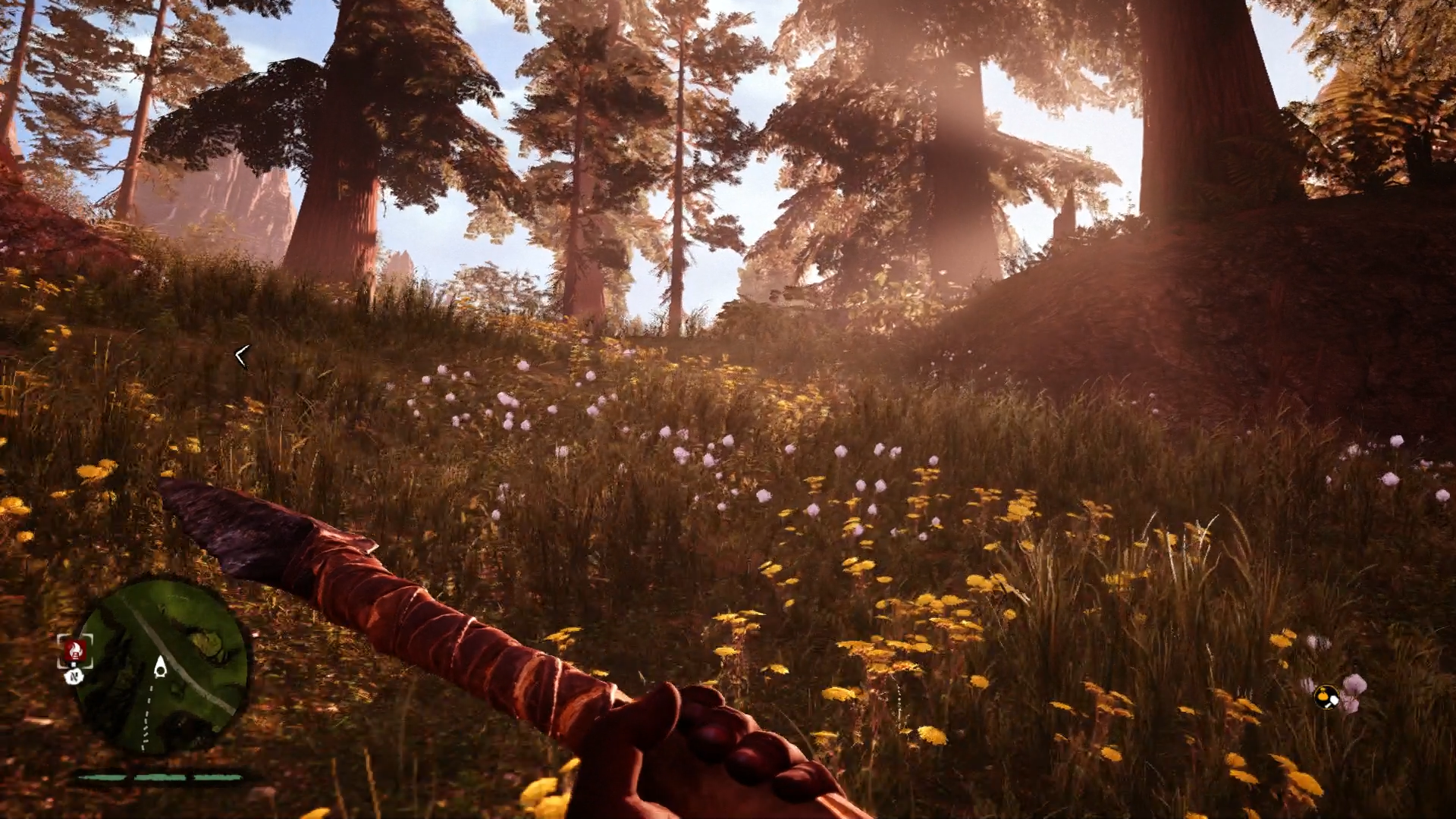
I compared Fallout 4 to Far Cry in a previous review, noting how Fallout had shifted away from its typical RPG branching narrative, replacing them with largely linear quests. Far Cry Primal's non-linear approach to its character stories, with its expanded skills systems, feature-filled open world, primitive crafting systems and pseudo-settlement construction, is beginning to encroach on Bethesda-brand first-person RPG territory. Far Cry Primal doesn't evolve the franchise into an RPG (and I'm not saying it should), but I wonder just how many more steps it'd take.
Pros:
- One of the most gorgeous open worlds out there
- Fresh, engaging story, characters and setting
- Tons of content
Cons:
- Crafting and survival mechanics lack depth
- Certain areas can suffer from painful framerate issues on Xbox One
As I mentioned in the opening, Far Cry Primal joins various other recent and upcoming Ubisoft titles that seem to ditch the cookie cutter and chase new horizons. Primal is not just a brilliant game, it dramatically and triumphantly reinvigorates the Far Cry franchise.
Far Cry Primal is out now for Xbox One and PS4, and on March 1st for Windows.
Have you tried out Far Cry Primal? Share your thoughts in the comments section!

Jez Corden is the Executive Editor at Windows Central, focusing primarily on all things Xbox and gaming. Jez is known for breaking exclusive news and analysis as relates to the Microsoft ecosystem while being powered by tea. Follow on Twitter (X) and tune in to the XB2 Podcast, all about, you guessed it, Xbox!
